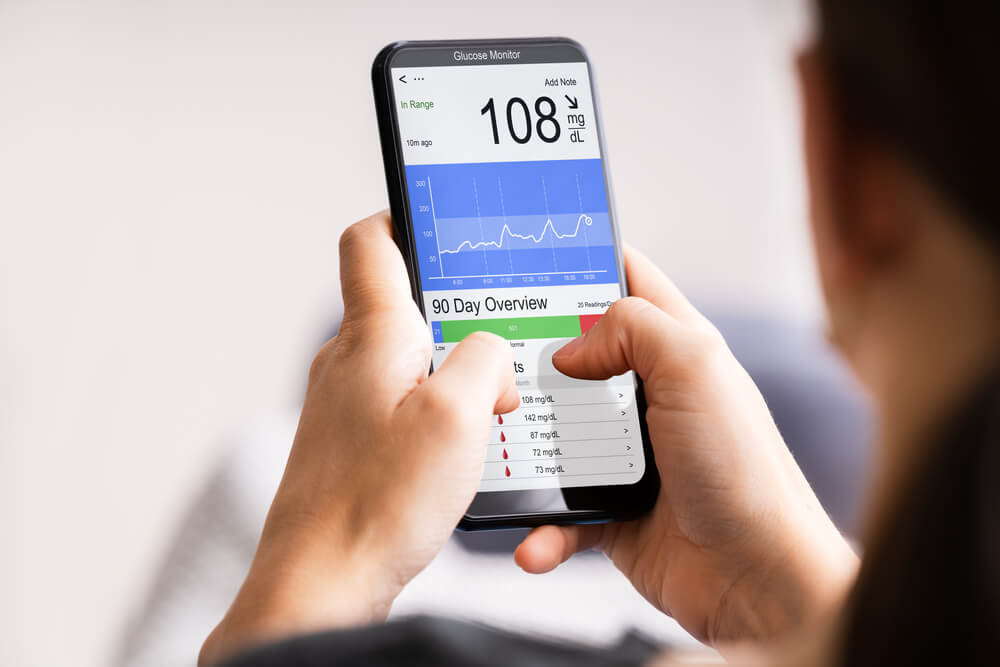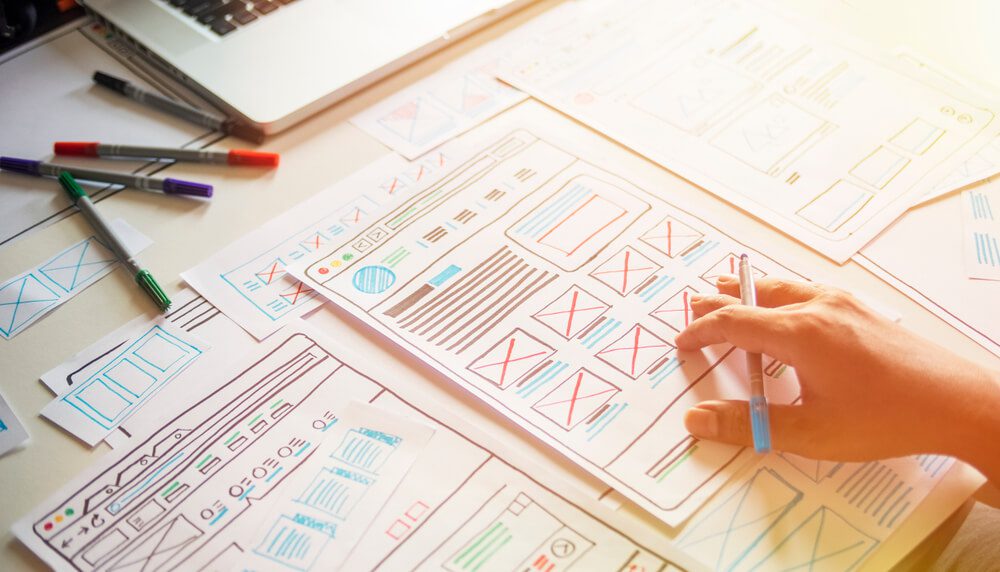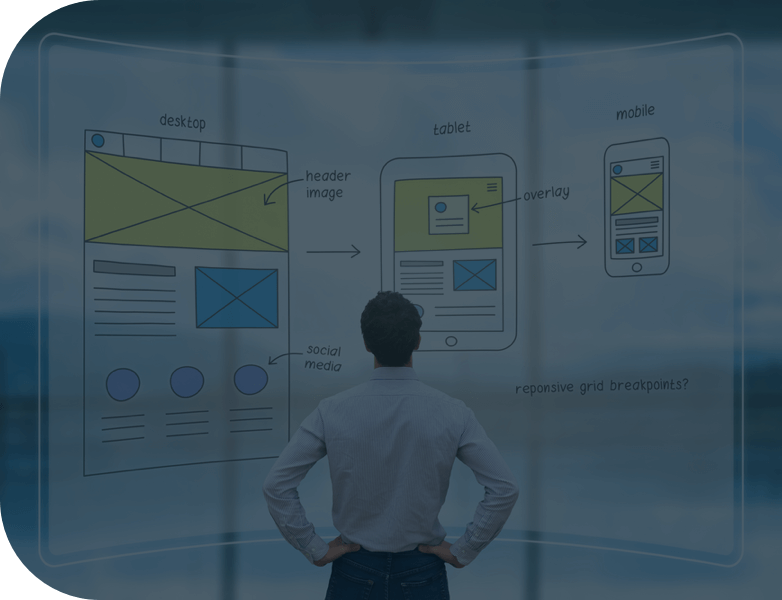
If you want to expand your San Diego business, developing a mobile app to reach your customers is an excellent way to...
Created end-to-end UX for a pioneering wearable health device voted ‘Best of CES’, 2019
Built a 5-star rated mobile application for a leader in the cycling industry
Reached 10K+ installs for a credit card management app
.png')
Schedule a consultation with a DAP expert today and find out what we can do for your business.





Any company wants their customers to be happy, which is why UX professionals lay so much importance on being “user-centric.” Every single decision throughout the UX process revolves around how a consumer will engage with the product. They ask if the product is providing solutions for challenges consumers are facing and how it can be improved further.
Our UX agency takes a comprehensive approach in ensuring you provide customers the best possible user experience. We have the knowledge, skills, and technology to create standout products that move business forward by satisfying and motivating your users.
Book a meeting directly here
UX evaluates how users interact with and experiences products and services across factors of usability, findability, credibility, desirability, accessibility, and value. UX professionals spend time studying consumer behavior and interactions to deliver products with maximum user value.
UX agencies design and develop mobile app user interfaces, websites, and software. UX broad and encompasses many disciplines including content strategy, information architecture, interaction design, user research, visual design, accessibility, user research, and psychology.
Don Norman, a pioneer in the field of user research says most companies employ designers trained in traditional design. Traditional designers are ill-equipped to fill all of the needs of interactive product design. Cross disciplinary agency design teams provide value by understanding and filling the needs of interactive design projects.
According to McKinsey Research, “businesses that embrace design generate 32% more revenue and 56% more shareholder returns on average.” 50% of consumers believe website design is crucial to businesses overall brand. Without doubt, UX is one of the most impactful bottom-line digital initiatives.
Thinking outside the box is the first step to improving your products’ UX. Development and design is a creative process and requires analytical thinking for success. Researching and learning to empathize with users is the foundation of improved user experience.
When you consider the business value of The cost of creating positive, functional user experiences is minimal compared to with their business value and importance. Costs vary by project and it’s misleading to provide values without knowing more about your project. Contact our team for a free estimate.
Have questions about your next project? Schedule a consultation with a DAP expert today and find out what we can do for your business.

We helped one of America’s top 25 credit card companies build a state-of-the-art app with over 10k downloads on the Google Play Store
We built an award-winning omnichannel digital experience for a enterprise healthcare brand
We created an ADA compliant website for a leading government SaaS provider
Created a dynamic literacy portal for a leading nonprofit focused on children’s and girls’ literacy

If you want to expand your San Diego business, developing a mobile app to reach your customers is an excellent way to...

Well-designed apps can help improve your lives in many ways – from keeping misspelled words out of your texts and ema...

In the early days of SEO, keyword stuffing and a ridiculous number of backlinks were the two things you needed to sec...

UX design is a multi-disciplinary approach to creating positive, practical, memorable user experiences with real business value. Designers approach UX to integrate and unify collections of experience with varying intent and interest level. For example, if you have an eCommerce website, professionals at a UX agency will work through each stage, from the first step when a user visits the website through checkout and post purchase.
The process of creating great user experiences centers on asking questions at each step of a users experience. To start, we ask the five Ws:
Who
Asks who your users are. What sites do they currently visit? What do they do online? What are their intentions, interests, pain points, etc.?
What
Similar to the “why”, UX designers and developers will ask what tasks would best be accomplished with this product to ensure it functions properly.
Where
Where will they most frequently access and use the product, what devices and situations? Then consider the opportunities and limitations of each device and scenario.
Why
Asks what motivates users and what do users perceive as valuable. Professionals will evaluate how the product can offer convenience for the users.
How
The final question relates to how the product will be developed and designed for maximum accessibility and usability.
All of the above come together to develop a product that seamlessly provides users with meaningful experiences.
UX teams are comprised of many individuals from a range of backgrounds and disciplines. Commonly, teams represent the following areas:
User research
This lays emphasis on understanding user behavior and motivations through feedback methodologies and observation. Once they have a clear understanding of the product’s functionality, they conduct a series of user testing to make sure that it is really resonating with their target audience.
Project management
Having a dedicated team member to keep a project timeline on track is extremely important for efficiency, and ultimately success. A UX agency will work with experienced project managers to make sure the design process is continuously focused on being user-centered.
Visual design
Visuals are important aspects of successful UX designs. It ensures that users stay engaged with the product and are encouraged to continue using it. To achieve this, designers focus on creating interactive interfaces that match your brand’s goals.
Content strategy
Similar to visual design, relevant content helps draw users in by providing them with all the information they need to know about your product.
UX and UI go hand in hand for delivering a high-performing product, however, there are a few key differences that set them apart. A UX agency might request that UX designers have some UI design skills so they can provide their clients with optimal results.
Below is a deep dive into the differences between the two:
User experience design is the process of identifying a user’s needs and is the first step in building a product. Professionals draw out a rough prototype based on in-depth market research, developing personas, and which they later test and validate prior to launching. Their responsibilities include:
A UX designer’s goal is to focus on user flows to achieve certain goals. For instance, they would ask what it would take for someone to sign up for an account on your website or app, and how to provide them with a seamless experience. The UI designer only steps in once the prototype has gone through a few rounds of iterations.
UI Design
Visual design is what makes the brand and this is exactly what UI designers are responsible for. They make the minimum viable product created by the UX designer aesthetically pleasing by adding colors, fonts, and graphics that represent your brand. Their goal is to make your product stand out and instantly recognizable in your industry. These elements speak to the user personas created by the UX designers in order to engage and connect with real people who drive up your revenue by using your brand’s product. Their responsibilities also include:
Essentially, a UI designer is responsible for creating an emotional connection between your product and users. Anyone using a website or app will remember how it made them feel; did it amuse them or evoke a sense of calmness? This connection links directly to your unique brand, and each color and piece of typography helps connect the dots for your users.
How do UX and UI Design work together?
The first thing to remember when it comes to UX and UI design is that they are both crucial to the success of a product. The app might look good, but if it doesn’t function properly, then you won’t see much traction amongst users. Alternatively, if your app is fast the font isn’t legible, users could easily feel frustrated and take their business elsewhere.
In order to stay ahead of your competition, hiring a UX agency that works with UI designers is crucial for getting both aspects right.
A successful product relies on a strong UX design that is goal-based and user-centric. Bringing in a UX design agency can help your brand reach an audience and make them see the value of your product. So what can a UX designer bring to your business?
Reduce costs in the long run.
Prototyping, testing, and going through multiple iterations can take a long time, but the amount that you invest in a UX agency from the start will significantly pay off in the future. This isn’t just about the design process but the research itself.
You might be wondering why UX research is so important. The first reason is that it shows how much potential your product has. A UX designer can gain valuable information to create realistic target personas and evaluate any risks involved. Secondly, it allows designers to figure out if your product really resonates with users so you can minimize referral costs in the future.
A positive user experience is what all businesses strive for. It’s always more cost-effective to resolve an issue at first rather than fix it post-launch, which is one of the most important reasons why working with a UX design agency is so helpful.
Customer satisfaction and retention
Imagine trying to check out on an eCommerce website only to reach an error page. Your next step would probably be to abandon the cart and make a purchase through another company.
Effective UX gives your users a seamless experience through easy navigation, clear descriptions of products, and a strong call to action, whereas poor UX only encourages your customers to do business with your competitors. If your product offers users a smooth journey, they will definitely stay loyal to your brand.
Increase ROI
Working with a UX agency doesn’t just increase conversion rates, it also provides an excellent return on investment. If a company notices a lack of engagement with their product, they will sometimes do a complete redesign to improve these metrics.
For instance, a chain store might want to change the way shopping feels by overhauling its website. A UX design agency can help them create a modern look that’s optimized for all electronic devices and recommends products based on a user’s previous search history and search as well as goods that are gaining popularity in their area.
Improve SEO rankings
Your brand’s visibility goes hand in hand with SEO. With Google being the biggest search engine in the world, having your website rank high on its results page can bring in lots of traffic and increase conversions.
Good user experience ties in directly with effective SEO. Google has gone deeper into analytics like “dwell time”, which is the number of time users spend on one page, and study all subsequent patterns to make sure they rank the most optimized websites at the top. This means it’s important for your brand to be user-friendly and well-designed.
Stand out
Even if your product is similar to others on the market, the way you convey your brand’s message is the key to standing out. Partnering with a UX agency to address your users’ needs will maximize your product’s visibility, and therefore drive higher revenue for your business.
Maybe you’ve already implemented UX for your product, but with the digital world constantly changing, there is always room for improvement. You can improve your product’s UX by understanding your users’ needs and studying their customer journey.
This is a way to understand how your customers are interacting with your product. Many people use touchpoints to empathize with consumers and create a special experience for them. A UX agency can guide you through how to do this in an effective way that will draw in loyal customers.
Consumers understand that they might have to provide some personal information when signing up for a service or making a purchase, but if they have to do it twice, they’re going to look elsewhere. To provide the best service, a UX agency can help you secure your customer’s information for future interactions.
Valuable feedback is extremely important to improving your product’s UX. As a founder, you might be biased in thinking your product is flawless, but your revenue ultimately comes from how happy your users are with it. Asking for – and immediately implementing – feedback from your users is a way of showing them that you understand their needs and are committed to providing solutions for them.
There is a reason UX professionals lay so much emphasis on responding to customers’ reviews. For instance, both Google and the app store give their users the opportunity to publicly share what they love about a product and identify any pain points. You might not be able to find a solution immediately, but acknowledging their feedback is a transparent way to prove that you are willing to take responsibility for your product
People might increasingly rely on technology to go about their everyday lives, but it doesn’t mean they’re necessarily looking for a replacement for human connections. User personas and customer journeys are all based on real human behavior, which is why the job of a UX agency is to make technology feel more accessible for improved customer experiences.
The point of improving technology is to make it faster and more convenient for your customers. To keep their attention, you should only ask them to do certain tasks, like verifying their identity, once. A UX agency can give you advice on how to make this easier by setting up newer technologies like voice verification.
This doesn’t mean building your product from scratch, it simply means that you should ask someone to try it out who doesn’t know anything about your brand. When you watch them engage with your product, you will get a clear understanding of how much value it’s bringing to your users.
Caring about your customers’ experience means inviting them to be a part of your brand’s journey. A UX agency can give you advice on how to create a customer advisory board (CAB) of your loyal customers to understand the challenges they face using your product.
Being upfront with your customers is one of the first steps to earning their trust, especially when it comes to sensitive information. For example, if your product will be billing them monthly after the free trial, don’t include that in the fine print. Use videos, email marketing, or any form of communication to be transparent about your brand’s practices.
The saying “less is more” has never been more true when it comes to UX. Even though researching and integrating user-friendly features is a long process, it’s not necessary to use too many fonts or colors at one time. Not only does it overwhelm your users, but you also risk making your brand less recognizable in the market.
Giving your users the option to sign in with Google or Face ID is a good way to improve user experience. It means that your brand is saving them time from remembering too many passwords and potentially having to reset them numerous times. Standing out from your competition is all about keeping up with the latest technology trends and your customers will thank you for it by staying loyal to your company.
All major companies have created content and products that adapt to mobile devices. When customers make online searches through their smartphones, they can still get the same great user experience as they do by searching on a desktop.
One of the main benefits of working with a UX agency is they have all the tools and expertise to implement UX best practices that will make your product gain traction. There are many factors that go into why a user would find your product valuable and how you can encourage them to continue using it.
Cramming all your products’ features and tools onto one screen might seem like it offers convenience to your users, but in fact, it would overwhelm them. Even if they don’t use a lot of the buttons or features, you want to avoid distractions. This includes having a scrolling feature – users don’t have to scroll! It gives them a chance to manage how much and what type of information they’re consuming.
This goes hand in hand with trying to avoid overwhelming your users. Your interface is a space, and if it’s well organized, you can easily find what you’re looking for. But if there are way too many objects, you’ll spend more time looking for what you need.
UX is about balance. Your most important information should be placed in priority on the drop down menu. Also, keep in mind that you might not need a drop-down menu at all depending on how many buttons you have. A UX agency can help you figure out your product’s layout and will build a drop-down menu if needed.
A UX design agency will always advocate for a clean, consistent style to keep your users engaged. You want to make sure that your product is accessible to everyone and design pages for different scenarios. Imagine multitasking during a busy day and forgetting where you are on a website or app. To avoid this situation, designers work to give pages clear headers and page names, as well as show the flow of different pages for easy reference.
Long lines of text in a small font are guaranteed to send your users to a competitors’ product. Remember, nobody wants to spend an excessive amount of time searching for information – they want it immediately.
The rule of thumb for UX design is that there should be a maximum of nine words per line and to avoid overcrowding the “whitespace”
Context-awareness should not overshadow a positive user experience. Sometimes brands like to re-enforce their message through two or more popups. This method is not only ineffective, but it inconveniences the user who is simply there to fill a specific need. At this point, the user has become distracted and lost track of where they were in the search process. A UX agency can advise you on when to integrate pop-ups in a way that will still engage your users.
Designers talk about a visual hierarchy, where certain elements are prioritized on the screen according to importance. Where contexts and graphics are placed communicates their relationships and importance to your overall goal. When you present information in a clear way, your end-user will understand what solution you are providing to their challenges.
Online forms are important for collecting information about your users, but there is a limit to how many times they should be used. Depending on your audience, a UX agency can guide you through the different options for formatting. The form fields reflect the customer journey, whether it be an onboarding document or a financial questionnaire.
Generally speaking, it’s best to use a single column so the end-user can continue their flow down the page as they check off the different sections. It’s also worth breaking up the form into multiple pages to follow the flow of your brand’s story.
Positioning, coloring, and labeling all tie together when it comes to impactful UX design. As mentioned earlier, consistency is what keeps your users focused on your product. For example, two common buttons are “Accept” and “Cancel”. Designers will typically establish on which side of the page each should be placed and which color they will be. They will also make sure that the buttons are labeled accurately. This saves users the hassle of accidentally clicking the wrong button and having to backtrack.
Sometimes when you work in a particular industry for a long time, it can be easy to lose perspective. Hiring a UX agency can help you expand your business by bringing in fresh ideas on new technologies and design techniques. This will result in your product going from an average user experience to an exceptional one where you’re not only making your current customers happy, but are consistently drawing in new users.
Design-centric companies are usually more successful than their competitors because they prioritize user experience. A UX agency can help your brand develop a strategy based on researching, designing, and testing products that will offer value to your customers. They will guide you on which areas of research to focus on and how to engage with your audience.
Having your strategy down is one thing, but putting it into action is another. UX experts help brands transition through this period with change management. When you see the results from the strategy, you will feel more confident in the changes being made. Additionally, those in your organization will also be able to seamlessly integrate the new systems and processes into their daily tasks.
All successful products start with strong research and analytical skills. Professionals working with a UX agency have extensive experience in development and design, and therefore are able to connect the results of market research to new ideas that will take your product to the next level.
Product launches
Now that your product has been validated and you’re confident that it will resonate with a large number of users, it’s time for the big launch. UX experts know how to manage product launches so your brand stays organized and can avoid operational issues.
This answer depends on a number of factors, including how well established the agency is; their developers and designers’ level of experience; how big the project is, etc. Of course, the more experience an agency has, the more they charge their clients. Don’t let this discourage you from hiring a UX agency! There are plenty of affordable options and pricing plans to get your UX to the next level. For instance, some might bill per hour and others could set up a retainer fee. Whatever way you choose to take, UX is a critical part of your product’s success.